|
Archaic Roasting Pit Excavated Near Three-Mile Resthouse
on Bright Angel Trail
Allyson Mathis 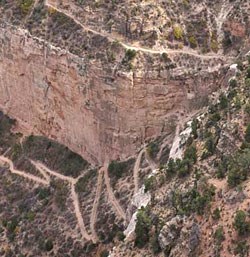
The modern Bright Angel Trail was constructed following an aboriginal trail leading to Indian Garden and the Tonto Plateau. The longer human history of the Bright Angel Trail, extending back at least 4000 years before present, is evidenced by archeological sites, including a rock art panel near the first tunnel and an archeological site excavated near Three-Mile Resthouse. 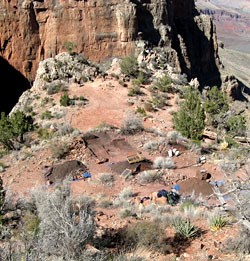
This archeological site had already been heavily impacted during historic use of the trail and, in fact, more than half of the roasting feature had already been destroyed. After consultation with Traditionally Associated Tribes, park and MNA archeologists completed a plan for excavation of the remaining portions of the site in hopes of collecting information to add to our understanding of the prehistoric human use of the area. 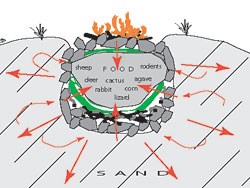
NPS illustration by Ian Hough 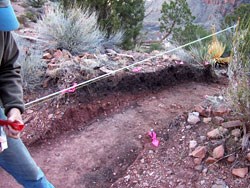
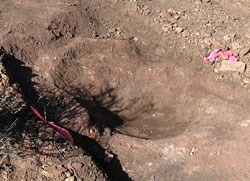
While they were excavating the large donut-shaped roaster, they uncovered another smaller basin-shaped feature within it that had an oxidized soil base and contained larger charcoal fragments than the rest of the roaster. Neff said, "In archeology, remains of the human use of fire are called thermal features. Thermal features include large roasting pits, slab-lined hearths, subfloor pits, scatters of rocks that have been cracked by fire, and charcoal stains in the soil. This smaller thermal feature initially appeared to be older than the large roaster, but the age relationships were somewhat muddled because part of it had been disturbed by the historic use in the area." 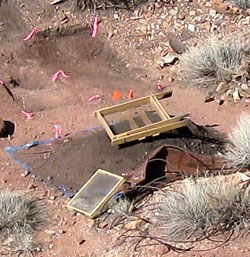
MNA archeologist Jim Collette said, "We often collect soil samples for analyses when we excavate thermal features because they can help us discern what the feature was being used for, such as the cooking of food. Additionally, we hoped to recover plant material for carbon-14 dating. As it turned out, the plant remains led to some of our most significant, and unanticipated, insights into the past human use of this site."
In addition to wood charcoal, almost 2,800 charred plant fragments were recovered with all but two fragments being fibrous leaf fragments from agave plants. Collette said, "One of the interesting findings of this excavation is that although other large donut-shaped roasters are known in Grand Canyon, there is little evidence that they were used to roast agave. This one clearly was." Three small carbonized plant fragments were dated using carbon-14 analysis. Two samples from the large donut-shaped roaster and one from the small thermal feature were analyzed. The dates obtained from the large roaster were 1460 - 1410 B.C and 800 - 780 B.C.; while the small thermal feature was used between A.D. 980 and 1030. Neff said, "The older dates are near the end of the Late Archaic time period, when small game hunters and plant gatherers utilized the canyon. The smaller thermal feature appears to have been used during the ancestral Puebloan, or Formative, time period, when people who practiced agriculture lived in this region, and which was about 1500 years after the last use of the large roaster." 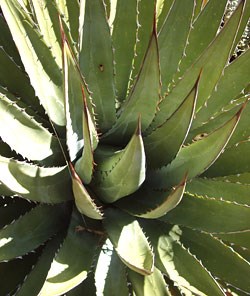
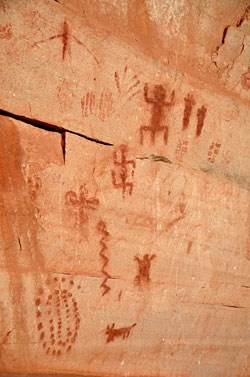
It is remarkable that the data show that this roasting pit was used by different peoples at different times over a course of 2,500 years. We keeping seeing that only certain places within the canyon landscape were and are good for people to live and travel. We certainly see this in these thermal features and in Three-Mile Resthouse itself." This article was originally published in Canyon Views, Volume XVI, number 1, Spring 2010. Canyon Views is a publication of Grand Canyon Association. Return to the Canyon Sketches eMagazine Home Page. |
Last updated: February 24, 2015
